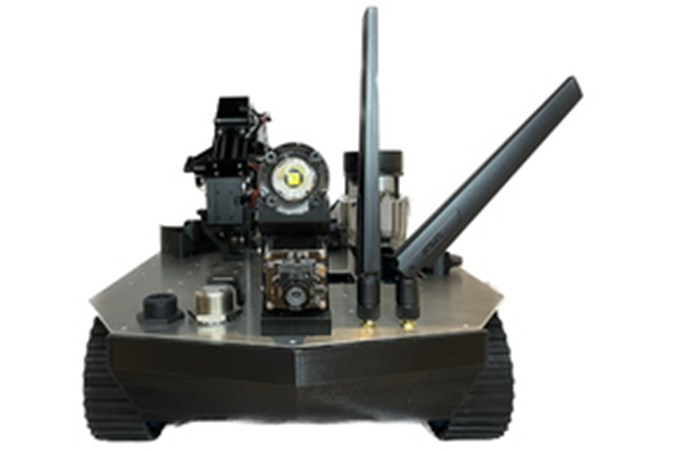Nuclear Decommissioning Authority

The robot, known as Lyra, has been used to inspect ventilation ducts and feedback radiological information. Human access to this area is currently impossible due to the size of the duct and radiological risks.
It follows a 3-year collaboration between the decommissioning team from Dounreays Fuel Cycle Area (FCA), a consortium of universities led by Professor Barry Lennox of the University of Manchester, and knowledge transfer experts at FIS360, to trial a small, tracked robot in a nuclear facility.
In 2020, the robotics specialists carried out initial trials in an inactive building, followed by a limited survey within a radiologically contaminated duct in the FCA. As a result of this research, a second-generation robot was developed, which improved on the original robots reliability in a hazardous environment.
Between February and April this year, the robot carried out a follow up survey of a radiologically contaminated underfloor duct that runs under the central corridor between the laboratories.
Commenting on this prestigious achievement, Dounreay Project Manager Jason Simpson said:
We are delighted that Lyra has been recognised in this way. At Dounreay we are always looking for technology that will help us to decommission the site, and remotely operated vehicles such as Lyra are ideal for areas that are too small or contaminated for people to access. The survey provided us with information that is crucial to informing the way that we will take forward the decommissioning of that area.
Barry Lennox added:
The trials at Dounreay have been incredibly helpful and not just for the development of Lyra. There are lots of reports describing that robots will transform how legacy nuclear facilities are decommissioned but there remain very few detailed case studies.
The Lyra deployment has demonstrated to many people in the nuclear industry that robots can be used to solve real nuclear challenges, and it has provided evidence that there can be significant cost savings and reductions in human entries into hazardous environments.
For Lyra specifically, the trials at Dounreay helped us progress the technology and allowed us to demonstrate that it worked in a real hazardous environment.
Dr Iain Darby, Dounreays Innovation Manager, said:
The UK is at the cutting edge of pioneering the use of robotics in challenging environments. The experimental nature of many of our sites now redundant facilities means the clean-up and demolition requires innovation as well as great care. Im delighted to see the achievement of the delivery team being recognised by Time and its a great example of what can be realised when some the of UKs leading specialists collaborate to tackle real world problems.
Dr Kate Canning, Nuclear Decommissioning Authoritys Head of Research and Development, said:
This has been a win-win, bringing together a range of partners to develop a solution which has benefits for all involved. The Dounreay site team was able to really focus on an ideal solution to the challenge, and Manchesters researchers brought their knowledge and expertise around the complex constraints on the site to develop a technological solution to the problem. Driving innovation and utilising new technologies is vital in helping us deliver our mission to safely and securely clean-up and decommission the nations oldest nuclear sites.
The work was supported by Engineering and Physical Sciences Research Council funding through the Robotics and Artificial Intelligence in Nuclear programme and National Nuclear User Fa
